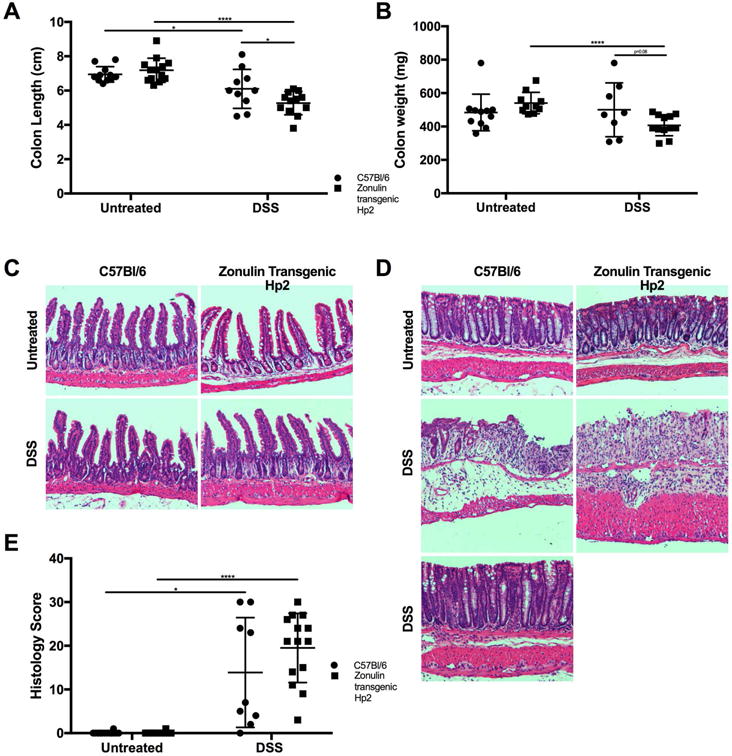Figure 3.

Effect of DSS treatment on the intestine of both Ztm and WT male mice on colon weight, length, and histology. (A) Colon length and (B) colon weight after 11 days ofDSS treatment. (C) Representative histology of small intestine in both untreated and DSS-treated Ztm and WT mice. (D) Representative histology of colon of either untreated or DSS-treated Ztm and WT mice. In WT mice, we observed two distinct groups of animals, with one group showing persistent colitis with occasional mucosal erosion and crypt distortion associated with increased inflammatory infiltrate in the lamina propria (middle panel), while in the other group a complete recovery of the inflammatory process was detected (bottom panel). Conversely, in DSS-treated Ztm, there was a homogeneous and more severe inflammatory process characterized by severe mucosal erosion, severe inflammatory infiltrate in the lamina propria, and loss of the regenerative crypt compartment. (E) Histology scores show dichotomous results in DSS-treated WT mice, while DSS-treated Ztm show more homogeneous severe inflammation (8–12 mice per group). *, P < 0.05; ****, P < 0.0001.
